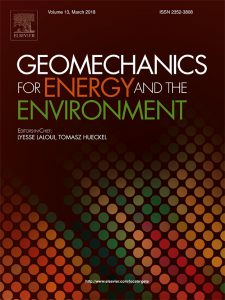1. Chemical Effects in Mechanical Behaviour of Geo-Structures
Lecturer
Tomasz Hueckel
Introduction
The Cam Clay family of models constitute a basic component of a contemporary toolbox in analyses and prediction of the performance of geo-structures subject to environmental and energy related loads. We introduce basic concepts, illustrate the simulated response to most typical mechanical loads and point out the possibility of extensions to include thermal and chemical loads.
There are two main reasons for the need to consider chemical effects in mechanical behavior of geo-structures. First, there is a world-wide crisis of environment endangerment related to the geosphere: soil and groundwater pollution by accidental spills, industrial wasting, acid rain, fossil fuel driven CO2 emission and/or inadequate isolation of pollutants; and second, there is a host of new energy related geo-technologies in which geo-chemical processes are induced or enhanced that adversely alter principal mechanical properties of geomaterials, often reducing stability and safety of geo-structures. In both cases, there is an emerging new knowledge concerning the effects of chemical, thermal and biological variables on mechanical properties and mechanisms and mechanical variables of soil and rock materials involved, and vice-versa the effects of mechanical variables such as stress, strain, damage affecting chemical and biological, physical or thermal processes and properties that require a multi-disciplinary approach. The levels of these couplings are multiple and often poorly recognized.
Especially with an ascent of technologies related to the energy production it is rational to include the environmental considerations early in the phase of development rather than seek remedies post factum, or after the damage has been induced. This clearly may refer to production of natural gas from shales, the techniques of hydraulic and chemical fracturing (fracking), CO2 sequestration technologies, biofuel energy production, nuclear waste isolation (long and short term), heat and fuel storage in the underground and under structures, geothermal fluid energy, energy from methane hydrates, oil production from high temperature, high pressure deposits, and many others. Effects of chemical and biological pollution on barrier geo-structures constitute a separate class of problems. Finally, technologies of chemical and biological improvement of mechanical and hydraulic quality of soils and rocks involve knowledge and methods based on the same principles. Geomechanics is a central, but per se insufficient, means to address the presented problems.
The intrinsic nature of coupling of chemical, biological, thermal and mechanical properties, variables and fields distinguishes the related problems from those in classical geomechanics. The need for blending several fields of applied sciences and engineering at a sophisticated level is critical for a modern and quick progress in the related technologies. Experiment based development of conceptual and numerical models and numerical tools is essential for a cost effective implementation of proofs of concept, prototypes, and eventually new technologies.



